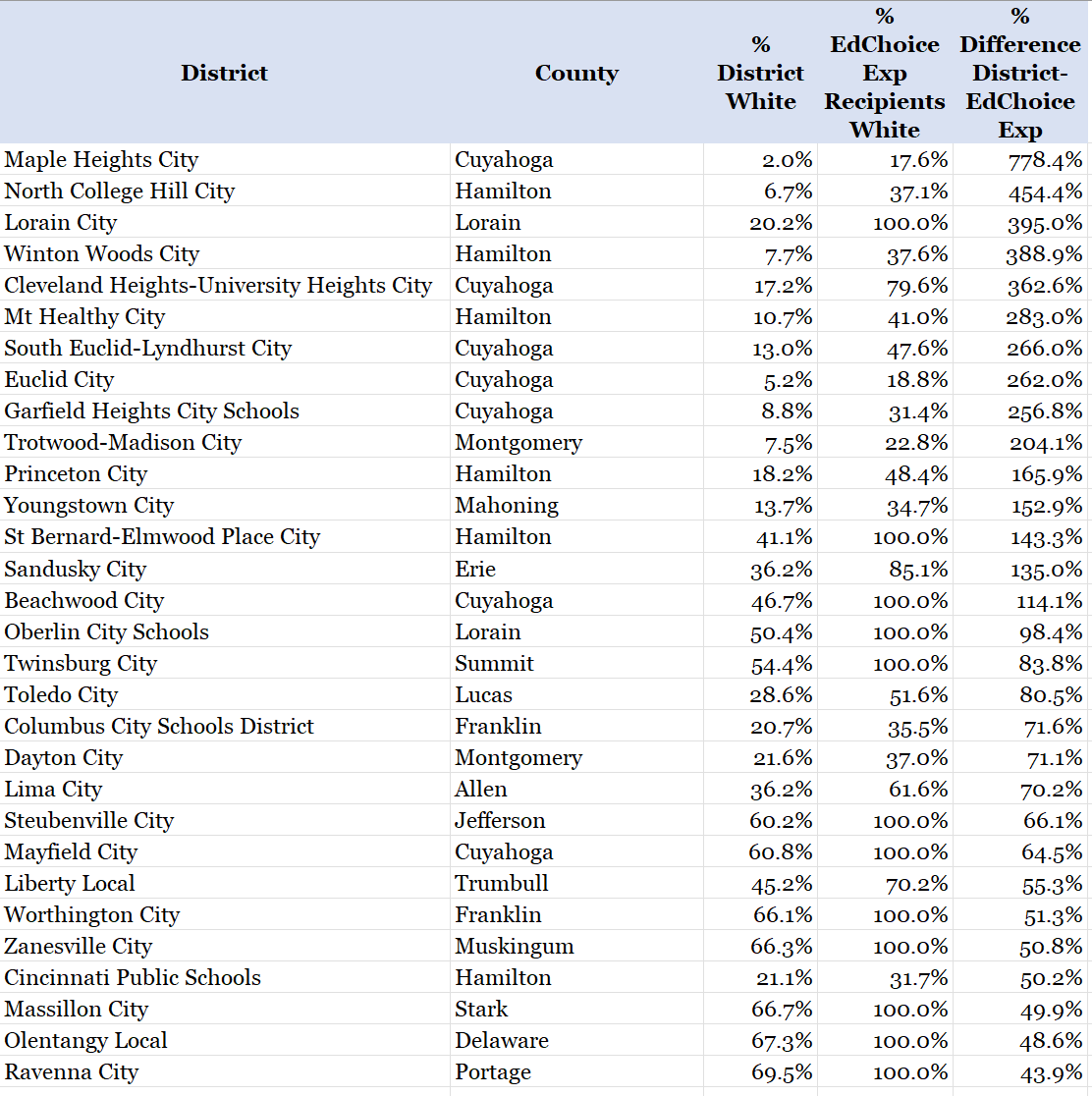10th Period: Ohio's Voucher Race Problem
Ohio’s voucher proponents are terrified of Brown v. Board of Education. Why is that? Because in Brown, a unanimous U.S. Supreme Court ruled that separate but equal education systems for children of different races was unconstitutional. In other words, states that purposefully separate children based on race into separate education systems are violating those kids’ constitutional rights.
Which brings us to the current EdChoice voucher program. As I’ve said many, many times, Ohio’s current EdChoice program that’s been around since 2006 where vouchers are granted based on the academic performance of their resident school districts, has led to greater racial segregation. That’s because in districts that lose at least 10 students to EdChoice, you’re more than 70% more likely to be white than the district itself.
However, there is another EdChoice voucher program. This one is based on your income. But don’t worry, it’s available to more than 85 percent of all Ohio families.
The EdChoice Expansion program has grown steadily since its 2014 inception. Today, it includes 26,902 students. The regular EdChoice program has 36,992 students — just about 10,000 more than the expansion.
Where it really differs, though, is in the number of school districts in which it exists. There are 333 school districts that lose at least 10 students to the EdChoice Expansion program. The original EdChoice program? Less than 1/3 of that — 100 districts.
However, the disturbing racial segregation pattern we have seen for years in the original EdChoice program continues in its expansive cousin.
-
Overall, in 296 of the 333 school districts that lose 10 or more students to EdChoice Expansion, a greater percentage of White students take vouchers than the school district in which they reside — that’s 89 percent of the time. The average student coming from these districts is 30 percent more likely to be White than their home district.
-
Despite the fact that 76 percent of the students in districts that lose 10 or more students to EdChoice Expansion are White, 87 percent of EdChoice Expansion recipients are White.
-
On a district-by-district level, including all 333 districts that lose 10 or more students to EdChoice Expansion, the average EdChoice Expansion recipient is 24 percent more likely to be White than the district itself.
-
Maple Heights is striking. Even though only 2 percent of Maples Heights students are White, more than 17 percent of EdChoice Expansion recipients from Maple Heights are White. Beachwood is less than 1/2 White, yet all 67 EdChoice Expansion recipients are White. Steubenville is 1/3 non-white, yet all 123 EdChoice Expansion students are White.
Overall, what the data show clearly is that even though EdChoice Expansion recipients come from much less diverse communities than the original program, they still take disproportionately more White students than even those communities.
Perhaps the most telling statistic is this one: The 345 districts that lose students to either EdChoice or EdChoice Expansion are, on average, 76.6 percent White. And the EdChoice students that leave for private school tuition subsidies? They’re 87 percent White.
Districts that lose no EdChoice students?
They’re 90.1 percent White.
I would remind everyone that the EdChoice Expansion program allows nearly 9 in 10 Ohio families to receive a voucher to attend a private school.
I can see why voucher proponents hate this topic.
Because Brown v. Board stands for the exact opposite outcome of the Ohio EdChoice programs. Yet Ohio lawmakers keep expanding and expanding these racial segregation programs. Can you imagine what will happen if their Universal Voucher program ever becomes law?
Because I’m betting those lawmakers can.
This blog post has been shared by permission from the author.
Readers wishing to comment on the content are encouraged to do so via the link to the original post.
Find the original post here:
The views expressed by the blogger are not necessarily those of NEPC.

